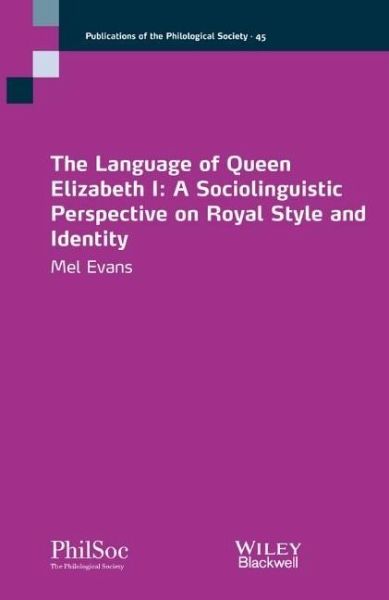
The Language of Queen Elizabeth I
A Sociolinguistic Perspective on Royal Style and Identity
Versandkostenfrei!
Versandfertig in über 4 Wochen
38,99 €
inkl. MwSt.

PAYBACK Punkte
19 °P sammeln!
The Language of Queen Elizabeth I presents one of thefirst diachronic accounts of the language - the idiolect - of the Tudor monarch who ruled England andIreland from 1558-1603.Suggests that Elizabeth I was a leader of language innovationand change, using it to build her complex social identity as afemale monarch in a masculine position of powerExamines a number of the monarch's letters, speeches, andtranslationsEstablishes Elizabeth I's participation in tenmorpho-syntactic changes and explores her spelling practiceDevelops theoretical and methodological frameworks ofvariationist sociolinguist...
The Language of Queen Elizabeth I presents one of thefirst diachronic accounts of the language - the idiolect - of the Tudor monarch who ruled England andIreland from 1558-1603.
Suggests that Elizabeth I was a leader of language innovationand change, using it to build her complex social identity as afemale monarch in a masculine position of power
Examines a number of the monarch's letters, speeches, andtranslations
Establishes Elizabeth I's participation in tenmorpho-syntactic changes and explores her spelling practice
Develops theoretical and methodological frameworks ofvariationist sociolinguistics through the analysis of theindividual speaker
Argues for the significance of style as a linguistic andmaterial property in our account of language variation andchange
Suggests that Elizabeth I was a leader of language innovationand change, using it to build her complex social identity as afemale monarch in a masculine position of power
Examines a number of the monarch's letters, speeches, andtranslations
Establishes Elizabeth I's participation in tenmorpho-syntactic changes and explores her spelling practice
Develops theoretical and methodological frameworks ofvariationist sociolinguistics through the analysis of theindividual speaker
Argues for the significance of style as a linguistic andmaterial property in our account of language variation andchange


